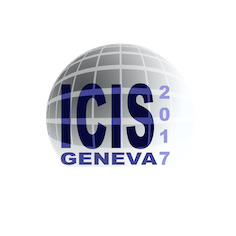Speaker
Description
Zeolites have been heavily utilized for different industrial applications that include catalysis, ion exchangers, and adsorbents. Due to the stability and rigidity of the zeolite framework, it has been investigated recently as a template to hold nanoparticles in its matrix [1]. This would allow the framework to immobilize nanoparticles without the need for a polymeric stabilizer that prevents agglomeration.
Silver (Ag) embedded in a zeolite matrix is one of the heavily studied nanocomposites because of its properties that may find applications in biomedicine and sewage disposal systems. Ag is a potent antibacterial material with a broad antibacterial spectrum and considered to be relatively safe [2]. The usual route for the synthesis of these composites is via impregnation through ion-exchange of the solid support then reduction to their metallic states [3]. However, conventional techniques for the reduction process involve the use of harsh chemicals detrimental to health and environment.
Recently, reduction via radio frequency plasma treatment has been conducted [4] to reduce Ag ions to its metallic form embedded in a natural zeolite framework. In this work, electron beams were utilized to reduce Ag in the zeolite matrix. A multi-cusp ion source with a tungsten hot-cathode as filament was employed in the process. Extraction of charged particles was achieved using a ~90% transparent dual-electrode extraction system made of tungsten wire mesh capable of producing low-energy beams [5]. Ag-impregnated zeolite powders were mounted and exposed to ~100 eV electron beams at different exposure times ranging from 15 min to 60 min. Results indicated the successful reduction of Ag upon irradiation of electron beams. This confirmed that the composites acted as “electron sinks” [6] and promote the reduction of Ag and eventual growth of nanoparticles embedded in the matrix. The present scheme allows the use of sub-keV electron beams for the reduction process and does not need additional potential acceleration compared to previous works [7,8].
References
[1] D. Jiraroj, S. Tungasmita, D. N. Tungasmita, Powder Technol. 264 (2014) 418-422.
[2] C. Orha, F. Manea, A. Pop, G. Burtica, I. F. Todea, Rev. Chim. 380 59 (2008) 173-177.
[3] K. Shameli, M. B. Ahmad, W. M. Z. W. Yunus, A. Rustaiyan, N. A. Ibrahim, M. Zargar, Y. Abdollahi, Int. J. Nanomedicine 385 2010:5 (2010) 875-887.
[4] A. Osonio and M. Vasquez, accepted in Appl. Surf. Sci.
[5] M. Vasquez, Jr., S. Tokumura, T. Kasuya, S. Maeno, and M. Wada, Rev. Sci. Instrum. 83, 023301 (2012).
[6] D. G. Cheng, Catal. Surv. Asia 12 (2) (2008) 145-151.
[7] L. Ocola, A. Joshi-Imre, C. Kessel, B. Chen, J. Park, D. Gosztola, and R. Divan, J. Vac. Sci. Technol. B 30 (2012) 06FF08.
[8] P. Kern, C. Jaggi, I. Utke, V. Friedli, and J. Michler, Appl. Phys. Lett. 89, 021902 (2006).




